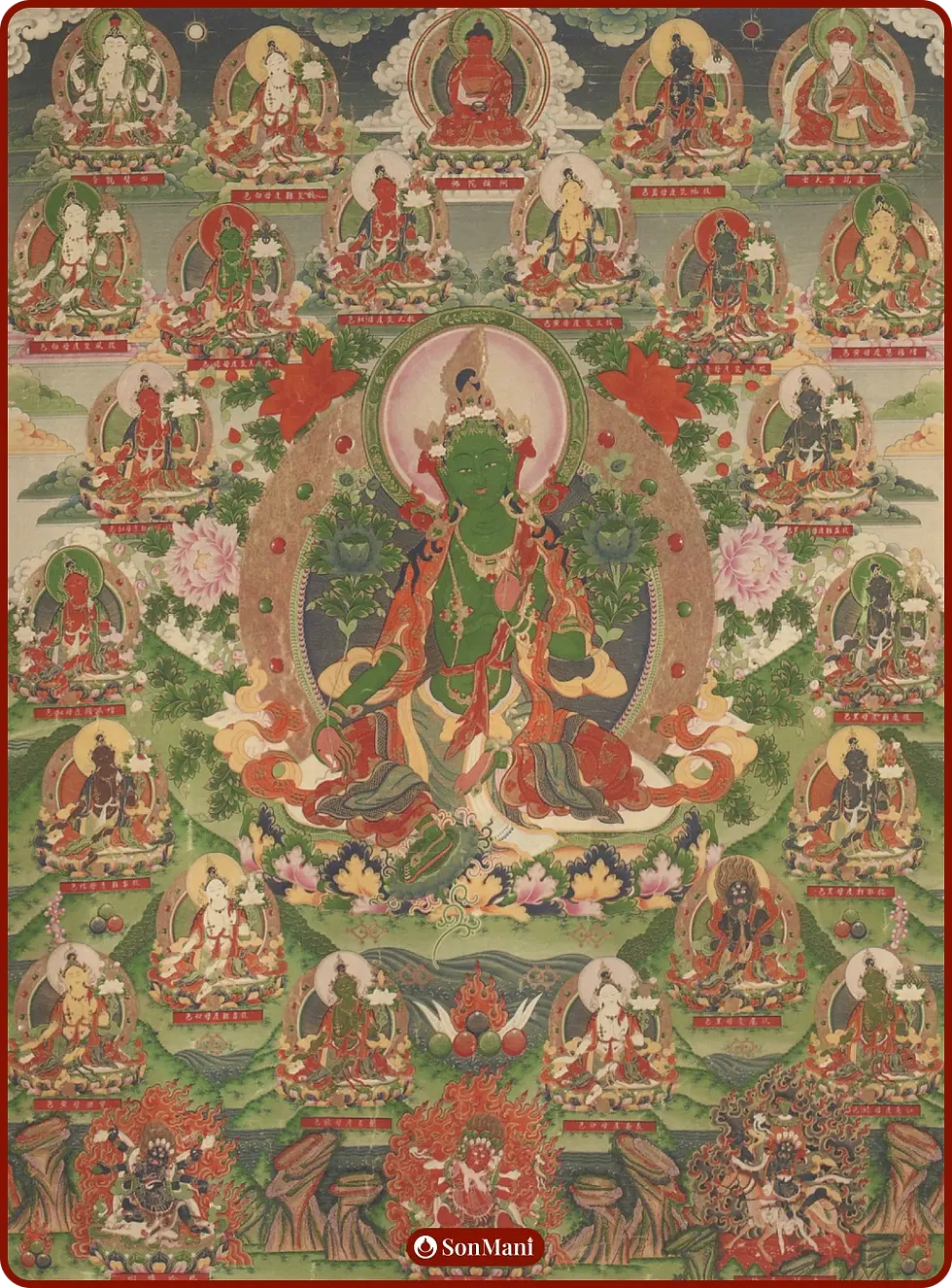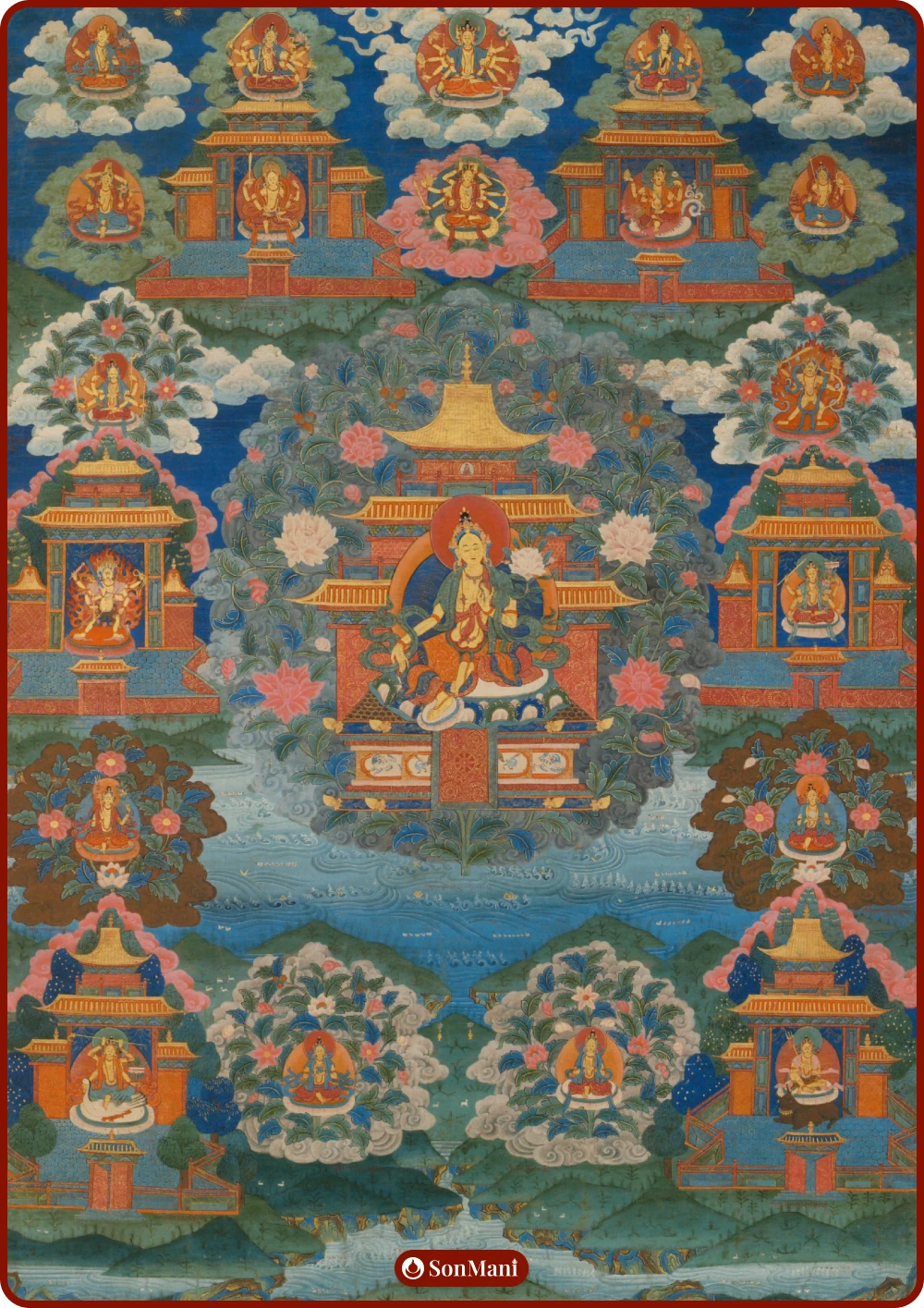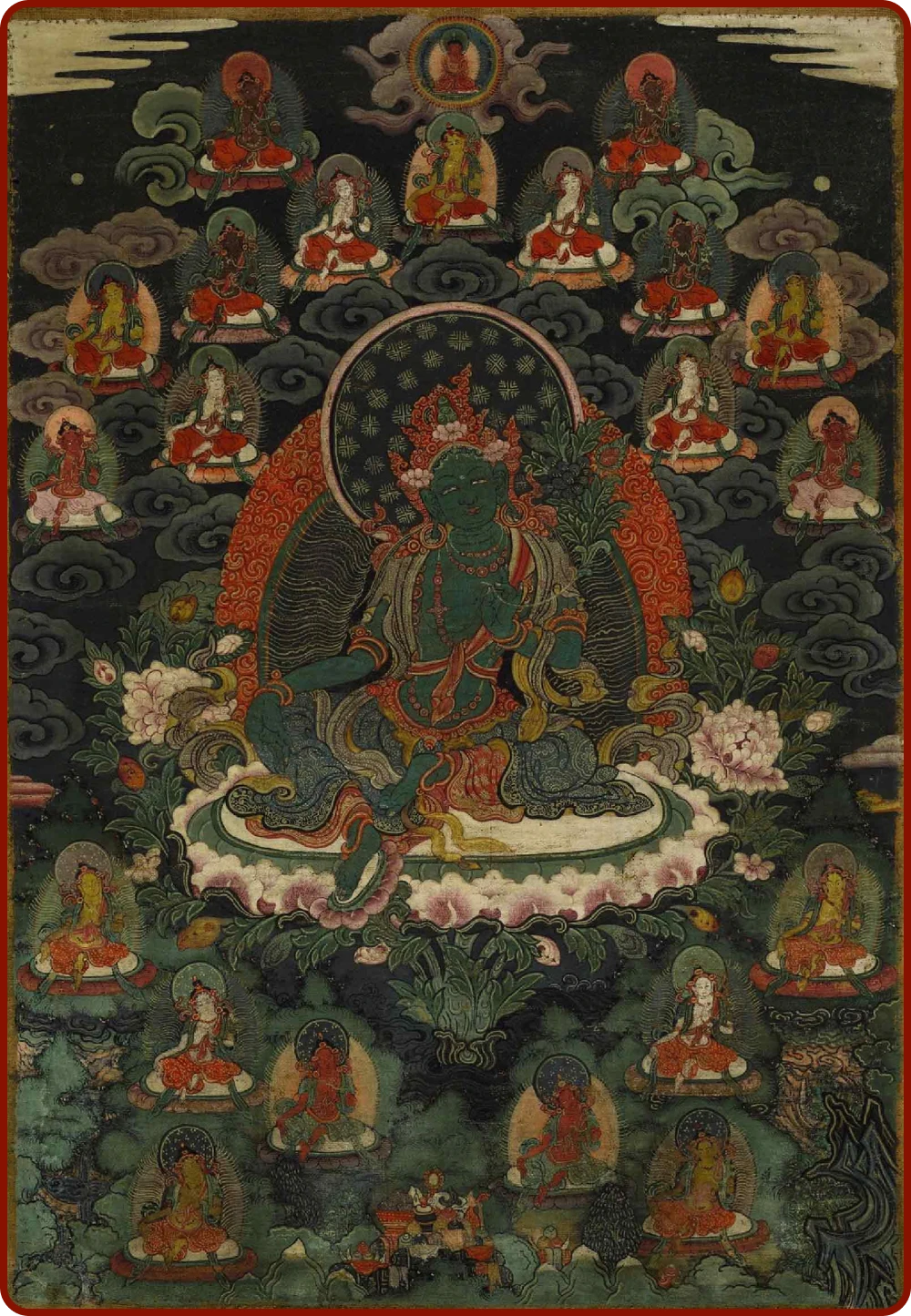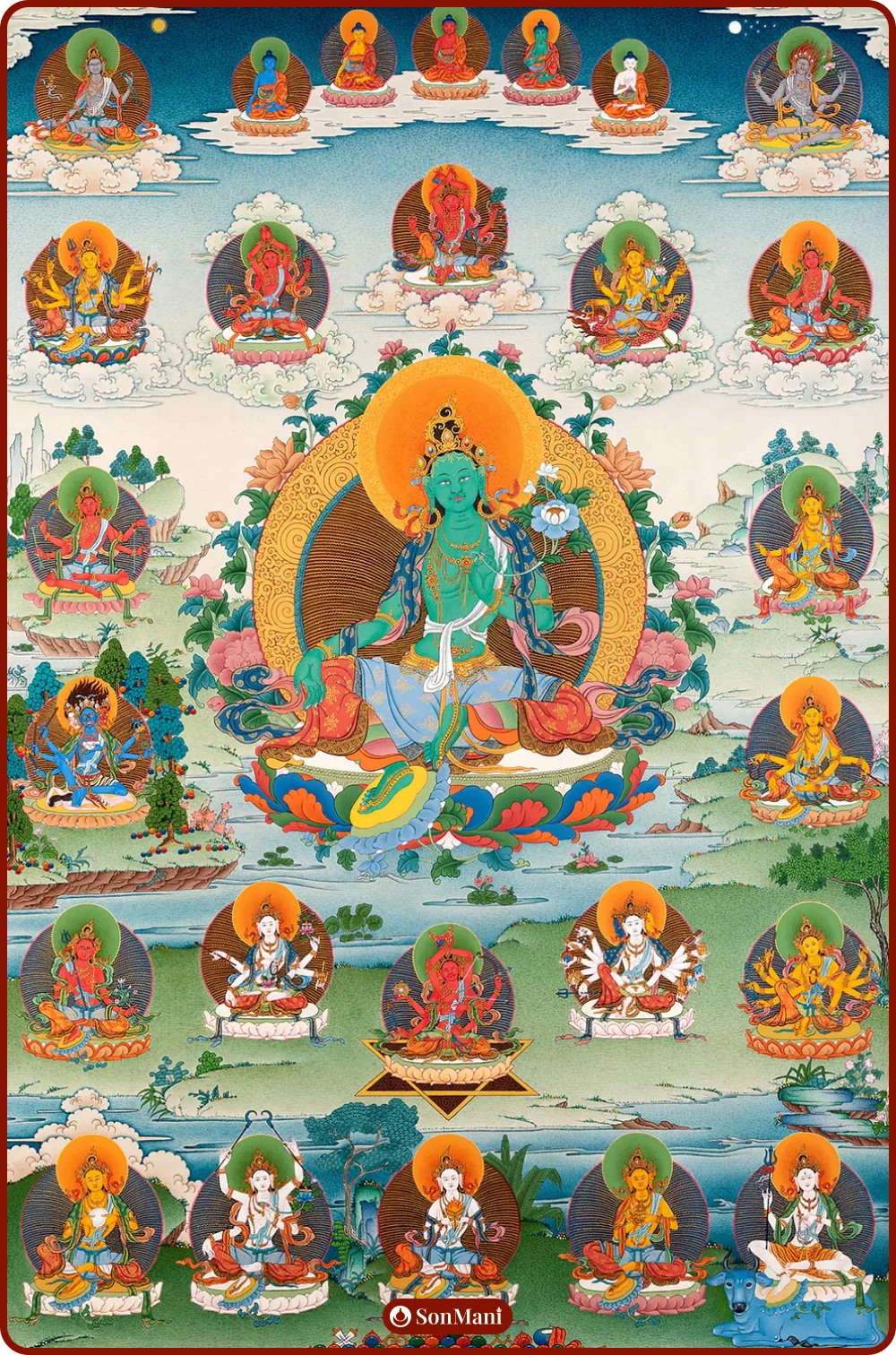21 Manifestations of Tara
- Jigme

- Dec 31, 2024
- 3 min read
There are three main traditions depicting the 21 manifestations of Tara, the Devine Saviouress. The first and most widespread tradition originates from Nagarjuna or Atisha. In this tradition, the 21 Taras are identical in posture and appearance, but their body colors and the colors of the vases they hold in their right hands vary. The second tradition, which originates from Longchenpa, also has identical posture and appearance for all the Taras, but their body colors, facial features, and the ritual implements on the lotus differ. Finally, the third tradition, from the teachings of Suryagupta, will be described in detail below.

21 Manifestations of Tara According to the Suryagupta Tradition
According to the great Lama Taranatha (1575–1634) of the Jonangpa lineage, Suryagupta (Tib. Ni ma sbas) was a scholar who practiced the Tara teachings in Kashmir, during the same period as two renowned Indian masters of the seventh–eighth centuries, Candrakirti and Candragomin. In Kashmir and Magadha, he established twelve Buddhist monasteries and commanded yaksha spirits to provide building materials, while also protecting practitioners from the “eight great fears”. From Nagamitra, he received the Tara empowerment and later became famous as a practitioner of the 108 Tara Tantras.
It is believed that he authored thirteen works, including the Tara mandala rituals and other sadhanas for Tara, which are still preserved in the Tengyur of Tibetan Buddhism. His great disciple, Sarvajnamitra, also became a practitioner of the Tara teachings and a holder of the lineage.
In the Suryagupta tradition, each of the 21 Tara manifestations is depicted with a unique form, displaying distinct colors, postures, facial expressions, ritual implements, and mudras. Consequently, each of these figures is typically painted independently in a separate thangka, with specific and detailed descriptions.
The Drukpa lineage’s practice of the 21 Tara is included in this tradition as well.
ཨོཾ་རྗེ་བཙུན་མ་འཕགས་མ་སྒྲོལ་མ་ལ་ཕྱག་འཚལ་ལོ། །
ཕྱག་འཚལ་ཏཱ་རེ་མྱུར་མ་དཔའ་མོ།
།ཏུཏྟཱ་ར་ཡིས་འཇིགས་པ་སེལ་མ། །
ཏུ་རེས་དོན་ཀུན་སྦྱིན་པས་ སྒྲོལ་མ།
།སྭཱ་ཧཱ་ཡི་གེ་ཁྱོད་ལ་འདུད་དོ། །
“OM — Homage to Venerable Arya Tara.
Homage to Tara, the fearless savioress,
the swift one who with the letters TUTTARE banishes fear,
who gives with the letters TURE all that is required,
I bow to her of the letters SOHA.”
The List of the 21 Taras
Pravira Tara
Chandrakanti Tara
Kanakavarna Tara
Ushnishavijaya Tara
Humsvaranadini Tara
Trailokyavijaya Tara
Vadipramardani Tara
Vashitottamada Tara
Khadiravani Tara or Varada Tara
Shokavinodana Tara
Jagadvasi Tara
Mangalavabhasa Tara
Paripacaka Tara
Bhrikuti Tara
Mahashanti Tara
Raganisudana Tara
Sukhasadhana Tara
Vijaya Tara
Duhkhadahana Tara
Siddhisambhava Tara
Paripurana Tara
Visual Samples



Curated and synthesized by
Jigme
References
Beer, Robert. “Twenty-One Taras (Suryagupta Tradition).” Tibetan Buddhist and Newar Tantric Art. Accessed September 15, 2024. https://www.tibetanart.com/Product.asp?PID=10
The Gyalwang Drukpa. Nghi quỹ tu trì Lục Độ Phật Mẫu, Ý Nghĩa và Hướng Dẫn Thực Hành. Hà Nội: NXB Tôn Giáo, 2021.
Watt, Jeff. 2003. “21 Taras.” Himalayan Art Resources. Updated April 2017. Accessed September 15, 2024. https://www.himalayanart.org/search/set.cfm?setID=140





Comments